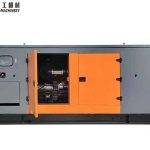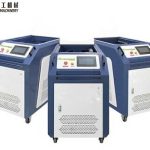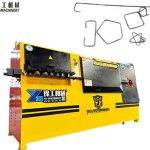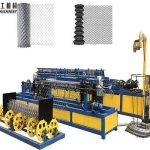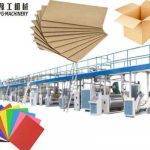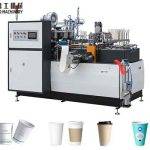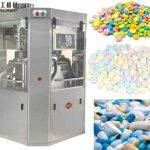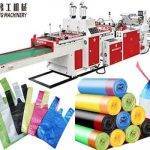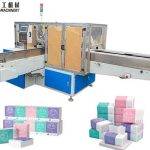In modern construction projects, ground flatness is one of the important criteria for measuring project quality. Traditional ground leveling methods are inefficient and difficult to ensure high precision. The emergence of concrete laser leveling machines has completely changed this situation. Its high efficiency and precision make it an indispensable equipment for modern ground construction. If your project requires a concrete laser screed machine, please get in touch with us for information and the latest quote.【WhatsApp/WeChat/Skype/Phone】+86 136 1385 6800
Concrete Laser Screed Machine Parameters:
| Model | YGJX31 | YGJX32 | YGJX33 | YGJX34 |
| Engine | ||||
| Model | Generator set | GX390 Electric start | GX390 Electric start | GX390 Electric start |
| Power | 2.0kW | 13hp/3600rpm | 13hp/3600rpm | 13hp/3600rpm |
| Fuel tank (L) | 14.5 | 6.5 | 6.5 | 6.5 |
| Running device | ||||
| Drive | Motor | Hydraulic motor | Hydraulic motor | Hydraulic motor |
| Running mode | Infinitely variable speed | Handle control, step-less speed | Handle control, step-less speed | Handle control, step-less speed |
| Running speed(m/min) | 0-36 | 0-45 | 0-65 | 0-45 |
| Suggest working speed(m/min) | 5 | 5 | 5 | 5 |
| Screed head | ||||
| Type | Self-leveling | Electric control, self-leveling | Self-leveling | Hydraulic control, self-leveling |
| Width | 2500mm | 2500mm | 2500mm | 2500mm |
| Exciting force | 500N | 500N | 500N | 500N |
| Vibration frequency | 50Hz | 50Hz | 50Hz | 50Hz |
| Laser control system | ||||
| Control type | Microcomputer laser scan | Microcomputer laser scan | Microcomputer laser scan | Microcomputer control |
| Operation mode | Walk-behind | Walk-behind | Walk-behind | Walk-behind |
| Forward and reverse | Handgrip control, step-less speed-walking | Hydraulic control | Handgrip control, step-less speed-walking | Hydraulic control |
| Size and weight | ||||
| Working size(mm) | 2758*2622*1980 | 2740×2659×1980 | 2578×2643×1980 | 2780*2622*1980 |
| Weight(kg) | 295 | 365 | 380 | 410 |
Main Components of Concrete Laser Leveling Machine:
- Laser transmitter: Produces a precise horizontal or tilted laser reference surface. Usually mounted on an adjustable tripod and placed in the center or appropriate position of the construction area to cover the entire construction area. Some advanced laser transmitters have a dual slope function, which can set the inclination in both the X-axis and Y-axis directions.
- Laser receiver: Installed on the leveling machine to receive the laser signal emitted by the laser transmitter. The receiver usually has a certain vertical receiving range to adapt to the slight height changes that may occur during the construction process.
- Control system: Receives the signal from the laser receiver and controls the various actions of the leveling machine according to the preset parameters, such as scraper lifting, vibration frequency, travel speed, etc. The control system is the core of the leveling machine and determines the accuracy and efficiency of the leveling.
- Leveling machine body: Including scraper, vibrator, travel mechanism, etc. The scraper is responsible for scraping the concrete flat, the vibrator is responsible for vibrating the concrete to make it dense, and the travel mechanism drives the leveling machine forward or backward. According to different construction requirements, there are many types of leveling machine bodies, such as walk-behind type, ride-on type, telescopic arm type, etc.
Concrete Laser Screed Machine Application Areas:
- Industrial plants: especially electronic plants, pharmaceutical plants, food plants, etc. with high precision requirements.
- Large storage and logistics centers: ensure the smooth operation of forklifts and other equipment.
- Airport runways and aprons: ensure the safety of aircraft takeoff and landing.
- Supermarkets and exhibition halls: provide a flat and comfortable ground environment.
- Other projects with high requirements for ground flatness: such as parking lots, squares, roads, etc.
Concrete Laser Screed Machine for Sale in Hungary
A Logistics Center Project in Budapest, Hungary
Project background: A fast-growing logistics company in Budapest needs to expand its storage center and build a high-standard warehouse with an area of about 10,000 square meters. The warehouse needs to withstand high-intensity forklift operations, so the ground flatness and bearing capacity requirements are very high.
Solution: The construction party decided to use a concrete laser leveling machine for ground construction to ensure high precision and flatness of the ground. They chose a ride-on laser leveling machine to improve construction efficiency.
Construction process:
- The construction team first used equipment such as total stations to accurately measure the site elevation and set up laser transmitters to establish an accurate horizontal reference surface.
- After the concrete is poured, the construction personnel operate the laser leveling machine for paving, scraping, vibration compaction, and other work. The laser receiver receives the laser signal in real time, and the control system automatically adjusts the scraper height to ensure the flatness of the ground.
- After the construction is completed, the ground flatness is tested using professional testing equipment, and the results are in full compliance with the design requirements.
Customer feedback (person in charge of a logistics company):
“We are very satisfied with the floor of the new warehouse. After the laser leveling machine was used for construction, the floor was very flat and the forklift was very stable on it, which greatly improved our logistics efficiency. Compared with the warehouse built using traditional methods before, the floor quality of the new warehouse is significantly better. In addition, the construction speed was also very fast, much earlier than our expected construction period. This saved us time and cost. We are very grateful to the construction party for recommending the use of this advanced equipment.”
Factors to Consider When Choosing a Concrete Laser Leveling Machine:
- Construction area and site conditions: Choose the right machine model and specifications.
- Leveling accuracy requirements: Choose a machine with the right accuracy level according to the project needs.
- Machine performance and reliability: Choose a well-known brand and reliable quality product.
- After-sales service and technical support: Choose a supplier that provides good after-sales service and technical support.
- Budget: Choose a machine with the right price/performance ratio according to the budget.

